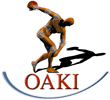Ορθοπαιδικό Αθλητιατρικό Κέντρο Ιωαννίνων
“Ένα σύγχρονο και πλήρως εξοπλισμένο εργαστήριο”
Microsurgical dissection of the carpal tunnel with respect to neurovascular structures at risk during endoscopic carpal tunnel release.
Arthroscopy. 2006 Aug;22(8):807-12.
PURPOSE: The goal of this descriptive study was to investigate the anatomy of the carpal tunnel with respect to the related neurovascular structures, because a detailed knowledge of the complex anatomy of this region is essential to perform endoscopic carpal tunnel release.
METHODS: Sixteen fresh-frozen cadaveric hands were used for the study. Dissection of the palmar aspect of the hand was performed by use of magnifying loupes, an operative microscope, and microsurgical instruments. All anatomic components were photographed, and dimensions were recorded by use of a micrometer. The distance from the radial aspect of the os pisiformis and the proximal and distal portals to the main structures that may be injured was measured. Topography of the transverse ligament and possible adhesions to the tendons and median nerve were also recorded.
RESULTS: The mean distance from the radial aspect of the os pisiformis to the radial border of Guyon's canal and the ulnar edge of the palmaris longus tendon was 10.3 mm (range, 9 to 12 mm) and 16.1 mm (range, 12 to 22 mm), respectively. The mean distance from the distal portal to the superficial palmar arch and the ulnar artery was 10.4 mm (range, 5 to 15 mm) and 7.6 mm (range, 4.5 to 9 mm), respectively. The mean distance from the distal edge of the transverse ligament to the thenar branch of the median nerve was 2.7 mm (range, 0 to 4.1 mm). The mean length of the transverse ligament was 31 mm (range, 25 to 34.5 mm). In 14 hands we also identified the palmaris longus tendon. In 11 hands we found adhesions between the transverse ligament and the sheath of the flexor tendons.
CONCLUSIONS: The palmaris longus can be used as a guide for the placement of the proximal portal. Staying at the ulnar side of the palmaris longus keeps the superficial palmar branch of the median nerve at a safe distance from the instruments. The "fat drop sign" is also a useful guide for the placement of the distal margin of the transverse carpal ligament, keeping the distal portal away from the superficial palmar arch. Synovial adhesions can usually cover the inferior surface of the transverse ligament, and they need to be removed for clear endoscopic identification of the transverse fibers before the ligament is cut.
CLINICAL RELEVANCE: Detailed knowledge of the complex anatomy of the carpal tunnel is essential to perform endoscopic carpal tunnel release.


